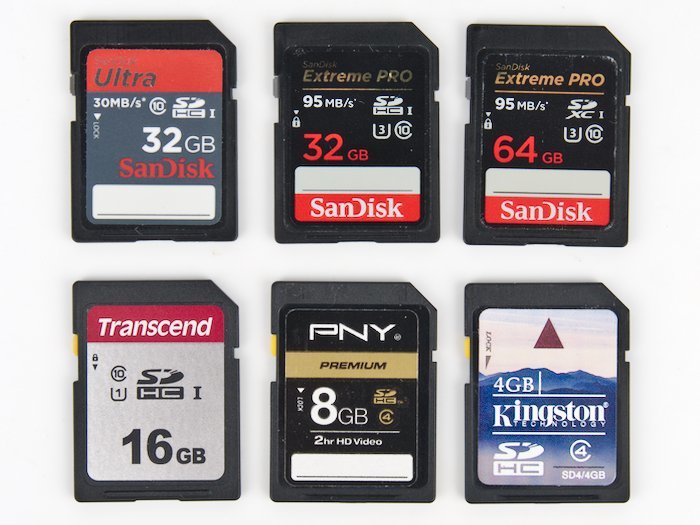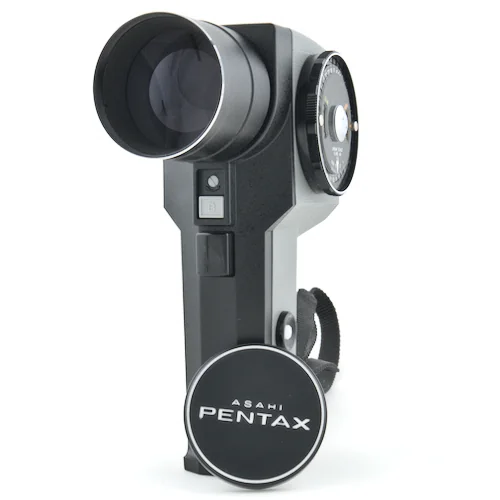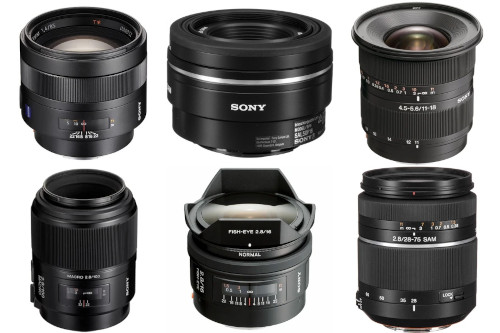
The 6 Best Lenses for the Sony A230
- Nathaniel Stephan
- Sony a230
- April 10, 2020
Table of Contents
The Sony A230 is a fantastic DSLR camera that is still capable of taking excellent photos. If you do not own a lens or are wanting for a new lens, this page will talk about the top 6 lenses for the Sony DSLR-A230.
Affiliate Advertising Disclosure
Outside the Shot is a participant in the Amazon Services LLC Associates Program, an affiliate advertising program designed to provide a means for sites to earn advertising fees by advertising and linking to Amazon.com.
As an eBay Partner, I may be compensated if you make a purchase. I also participate in affiliate advertising programs with KEH and Adorama. More can be found on the Affiliate Disclosure page.
What Lens Mount Does the A230 Use?
The Sony A230 uses the Sony A-mount. It’s also identical to the Minolta A-mount. The reason behind this is that Sony purchased Konica Minolta’s camera division in 2006.
Minolta engineered the A-mount for the introduction of interchangeable lens cameras with autofocus in 1985. It is still Supported by Sony.
Standard Lens Cap Size
55mm, but in reality the sizes are all over the place. Minolta lenses tend to have 49mm filter threads.
You can also find numerous lenses that have much larger filter threads than 55mm. It’s not rare to see 72mm or 77mm filter threads. It would have been good if Sony lenses needed only 2 or 3 different filter thread sizes.
Used A-Mount Camera Lens Prices
Pricing is regularly in flux. During the past few years, interest in film photography has been increasing. Seeing as there are 35mm Minolta cameras that use A-mount lenses, some additional demand is placed on the cost of lenses.
The Sony A-mount also doesn’t hold a significant market share. That’s why, a smaller amount of third party choices exist and the lenses built by Sony are all too often on backorder.
To get the least expensive price on what you want, check several sites. For used lenses, be ready to buy when you find a bargain as they do not be available for very long.
Cheapest Lenses for the Sony A230
The two cheapest lenses for the Sony Alpha A230 are the original kit lenses. The most common option is the 18-55mm lens. The second is the 55-200mm kit lens.
Standard Primes
Sony 50mm f/1.8 SAM DT
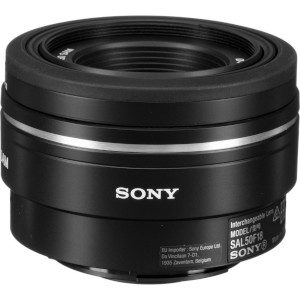
- Outstanding optics.
- Small and light weight.
- Can be difficult to find new.
- Smooth Autofocus Motor (SAM)
- Circular aperture.
See current price and more information on:
A superb combo of lightweight and very compact size. Quiet and fast autofocus is powered from a built-in motor.
Rounded aperture blades allow you to close down by 2-stops and still have an almost circular aperture. The result is spectacular bokeh and greater flexibility in managing the depth of field.
Minolta Maxxum AF 50mm f/1.7
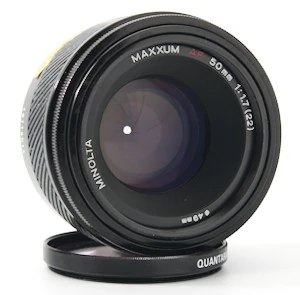
- Built-in lens hood.
- Amazing value.
- Light and compact.
- Widely available used.
- Coupled autofocus.
See current price and more information on:
This is an initial model from when Minolta originally launched the A-mount for autofocus. Due to how old the lens is, the autofocus is done by the built-in motor in the A230.
Autofocus that is coupled can be somewhat noisy and laggy. On the other hand, if that is not a huge concern for you the picture quality is superb. {The bokeh is eye-catching and you will get a classic image rendering|You’ll get pleasant bokeh and a classic look.
Another significant benefit of this lens is the price. It is noticeably less expensive when compared to the Sony 50mm f/1.8 and on top of that may be the least expensive lens listed.
Sony 50mm f/1.4
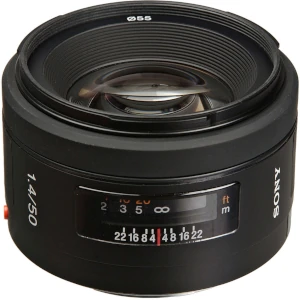
- Outstanding optics.
- Optical multi-coatings.
- Circular aperture.
- 55mm filter threads.
See current price and more information on:
A little faster than the Sony or Minolta f/1.8, however that can certainly be important when you are working in low light. That of course comes at an additional cost.
It is still a relatively compact and light lens that works comfortably on the A230 and fits into practically every camera bag.
A moderately lower priced solution is the Minolta AF 50mm f/1.4. Be aware that they can be very difficult to get in usable condition. The lens also as designed with physically coupled autofocus, which is worse than lenses that have built-in motors}.
Portrait & Telephoto Lens
Sony 85mm f/1.4 ZA
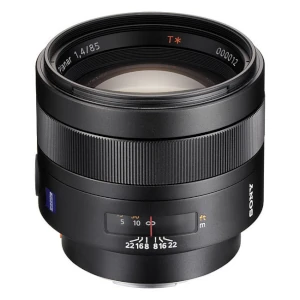
- Incredible bokeh.
- Excellent value used.
- T* coating to reduce flare and increase contrast.
- Astonishingly sharp wide open.
See current price and more information on:
Sony pulled out all the stops with this lens. Zeiss manufactured the lens. The ZA (Zeiss Alpha) means that Zeiss created the lens only for the A-mount.
This lens is extraordinary. Tack sharp corner-to-corner with spectacular colors that produces incredible portrait photos.
A potential downside is that the lens is a tad on the heavy side thanks to being built like a tank and it can seem slow to autofocus at times. Take into account, that you will find those same problems with any 85mm f/1.4 lens.
Minolta Maxxum AF 85mm f/1.4
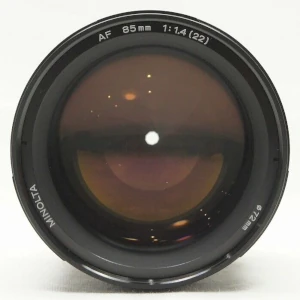
- Possible to find a good used deal.
- Superb image quality.
- Uses autofocus coupler.
- Double-Gauss design.
See current price and more information on:
This lens splits the price range of the other two lenses. Acquiring a used lens in better than acceptable condition could be challenging on account of a limited supply available.
The lens does have autofocus, but it uses a mechanical coupler and is driven by an in-camera body motor. This makes the lens slow and fairly loud.
The lens is an older 6 lens element Double-Gauss design. An upsiade to this is that images have a distinct look that are unable to be created by cutting-edge lenses that contain a lot more lens elements.
Sony A230 Zoom Lenses
Sony 28-75mm f/2.8
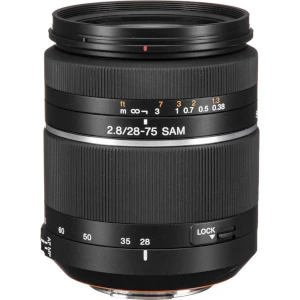
- Very usable zoom range.
- Great value used.
- Constant aperture.
- Smooth Autofocus Motor (SAM).
See current price and more information on:
If you want to shoot night events, indoor shooting, travel, and family photos, this is a superb fast zoom for that. It is a well made lens with fairly quiet autofocus.
It often gets compared to the legendary Zeiss 24-70mm lens, but it is approximately half the weight and less expensive. Both lenses create professional results.
Sony 55-200mm f/4-5.6 SAM DT
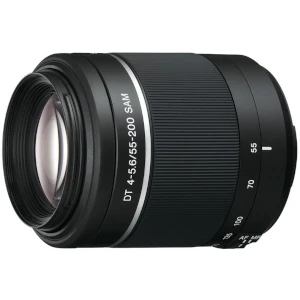
- Telephoto zoom range.
- Great for portrait or wildlife photography.
- Smooth Autofocus Motor (SAM).
- Inexpensive.
See current price and more information on:
While still creating wonderful results, this is a less expensive selection. It is not a professional lens, so so long as you do not need all the bells and whistles, it is a good lens.
As a telephoto zoom, it has a terrific zoom range for getting pictures of sports, wildlife, and children outdoors.
The autofocus is quick and it renders razor-sharp images. The outter body of the lens is plastic, which helps minimize weight.
Sony 75-300mm f/4.5-5.6
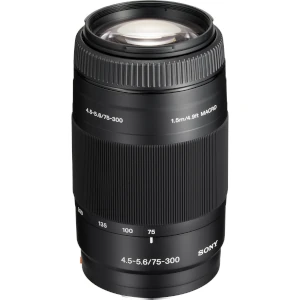
- Super telephoto zoom lens.
- Great for portrait or wildlife photography.
- 2.81 inches in diameter and 4.81 inches long.
- 55mm filter threads.
See current price and more information on:
This qualifies as a borderline super-telephoto lens. It is an outstanding low-cost choice for when you want a lens with lots of reach.
It is 2.8 inches (7.1 cm) in diameter, 4.8 inches (12.2 cm) long, and comes in at 1 pound 2 ounces (510g). While that’s not by any means light, many professional telephoto primes and zooms are several times that weight.
For slightly improved capabilities try to find the Sony 70-300mm f/4.5-5.6 SSM ED G-Series, but count on having to spend about twice as much.
Wide Angle Lens
Sony DT 11-18mm f/4.5-5.6
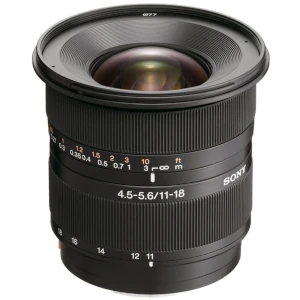
- Has a aspherical lens elements.
- Optical multi-coatings.
- Great value when purchased used.
- Circular aperture.
See current price and more information on:
Excellent value for the price if you want to shoot outstanding wide angle images that standard kit zooms cannot get. Distortion, especially of straight vertical lines is low or non-existent unless you’re purposefully trying to create an exaggerated perspective.
As well as being outstanding at taking beautiful landscapes, it’s an ideal lens to travel with. The lens is wide enough so when you come across something you will be able to get everything you see into the Sony A230’s frame.
Sony 20mm f/2.8
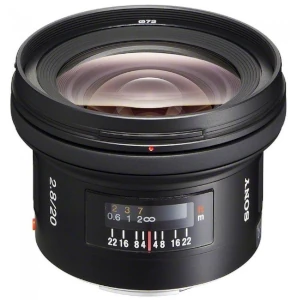
- Great for landscapes and architecture.
- Coated optics for clarity and definition.
- Rear focusing system for fast autofocus response.
- 72mm filter threads.
See current price and more information on:
It is a well-corrected lens that does a terrific job of reducing lens distortion. Additionally, quite a lot of effort has been done to minimize flane and internal reflections.
The result is a good lens that is perfect for landscape, architecture, and astrophotography. The lens uses rear focusing which means the front element will not rotate meaning you won’t have any complications using a polarizer or another filter.
Tokina AT-X 11-16mm f/2.8 DX II
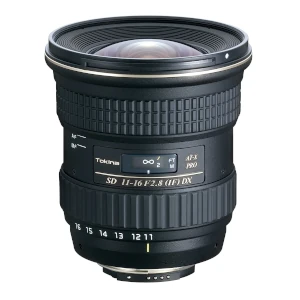
- Wide angle zoom lens.
- Hardened Alumite finish.
- Advanced optical coatings.
- All metallic moving parts.
- Designed for APS-C Sensors.
See current price and more information on:
It doesn’t have extremely fast autofocus, but the manual/auto focus clutch means it is a terrific pick for manual focusing. A pull or push of the focus ring will switch the lens from AF to MF.
The Tokina is faster when compared to the Sony 11-18mm, which will not be a large issue for architecture or landscape photography. Where you will notice something different is with astrophotography. That is a situation where you’ll want to have the 1-2 stop advantage the Tokina gives you.
Fisheye
Sony 16mm f/2.8 Fisheye
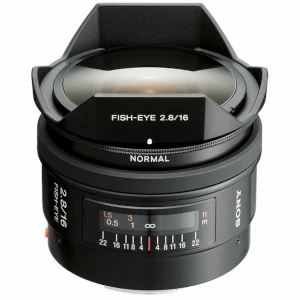
- Sharp corner-to-corner.
- 4 built-in filters: Normal, 056, B12, A12.
- 8 inch minimum focus distance.
- Aspherical and Extra-low Dispersion elements.
See current price and more information on:
Having built-in filters is an amazing addition because the lens has a petal-style hood which means a lens filter can not be attached to the front of the lens.
- 056 - Accented contrast for black and white photos.
- B12 - Correct color by eliminating red tones.
- A12 - Correct color by eliminating blue tones.
This lens has pretty much everything you could need from a fisheye. You can take advantage of the exaggerated distortion, but the image will be sharp from corner-to-corner without vignetting.
Rokinon 8mm f/3.5 Fisheye
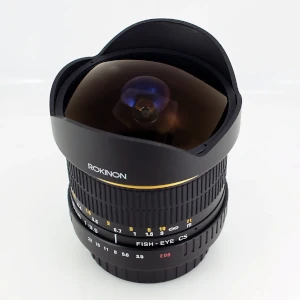
- Internal focus.
- 180 degree angle of view.
- Manual focus.
- Minimum focusing distance of 12 inches (0.3m).
- Designed for APS-C sensors.
See current price and more information on:
The lens contains a spherical front which means filters can not be used. It comes with a detachable petal-type lens hood that you’ll want to make sure is included if you opt for a pre-owned copy.
Build quality will be hit or miss on account of the very low price. Almost all people are really happy with the results they get. It is still important to completely check out the lens when you receive it to know for sure that the lens isn’t flawed.
Macro Lens
Sony 100mm f/2.8 Macro
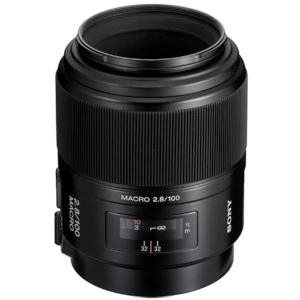
- 9 aperture blades.
- Focus range limiter.
- High contrast and resolution.
- 55mm filter threads.
See current price and more information on:
An ideal balance of price, working distance, and weight for the Sony A230. The autofocus will be a bit loud, but for taking macro images, manual focus is the way to go.
For the highest quality photos at 1x magnification the lens should be stopped down. By stopping down you will have a wider depth of field, which is always important for macro.
Sony 50mm f/2.8 Macro
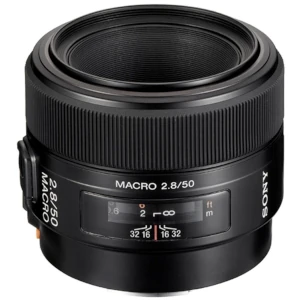
- 10.4 ounces (295g).
- Focus range limiter.
- Focus Hold button for full creative control.
- 55mm filter threads.
See current price and more information on:
A 50mm lens isn’t the best for 1x magnification due to how small the working distance will be. At 1x magnification, the front lens element will have to be around 2 inches (5 cm) from the subject.
This lens is excellent for close-up, copy work, and tabletop photography. It gives you the option to get closer to a subject than a 50mm prime, which is great for nature photography when you want to fill the frame with a smaller sized subject, for example a flower.
Tamron AF 90mm f/2.8 Di SP A/M 1:1 Macro
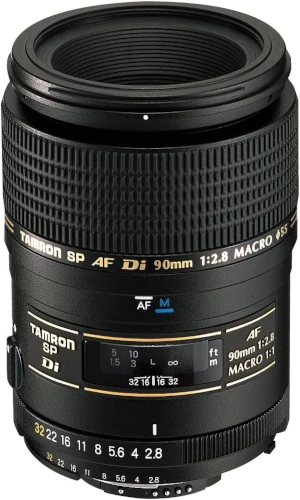
- Available in a variety of camera mounts.
- Improved resolution, chromatic correction, and optical coatings.
- Super Performance (SP)
- Focus clutch to switch between AF & MF.
See current price and more information on:
The focus ring feels great when manually focusing, and it also has autofocus. Closed down a couple of stops and you’ll get sharp pictures.
Furthermore, be careful when getting this lens as it’s made for various camera lens mounts.
